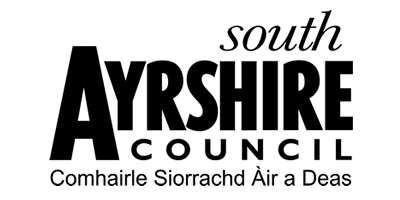On 6th July 1812 the Kilmarnock & Troon Railway, built by the 4th Duke of Portland to transport coal to Troon harbour by horse-drawn wagons, went into full operation. Until this time, Troon had been an out-of-the-way undeveloped anchorage with nothing but a few fishermen’s cottages – a haunt of smugglers. It was thanks to the railway that a harbour town grew up there.
The Duke (while still the Marquess of Titchfield, before succeeding to the dukedom) had purchased Troon Point and the surrounding land from its ancient owners, the Fullarton family. He began building a harbour from which he could export coal, mined on his estates near Kilmarnock, to Ireland. At first a canal was planned to get the coal from Kilmarnock to Troon, but eventually it was decided to build a railway instead.

Although many short-distance coal wagonways already existed, this was the first railway in Scotland to be authorised by an Act of Parliament, to connect two towns, and to have a scheduled passenger service. It would also be the first railway in Scotland on which a steam locomotive was tried out.

There had been some carriage of passengers on the single track which was opened during 1811, including a fatal accident, but in June 1812, with the double track nearing completion, the first advertised scheduled passenger rail service in Scotland was launched. A notice in the Ayr Advertiser announced that the horse-drawn carriage Caledonia, carrying passengers and goods from Kilmarnock to Troon on the iron railway, would leave Kilmarnock every Tuesday, Thursday and Saturday at 9.15am, and commence the return journey from Troon at 6pm. Special runs could be arranged on other days. The railway company estimated how many passengers made up a ton and levied a freight charge on the operators per ton, the same as for general cargo.


The service stopped running in autumn 1812, but it had proved popular with day trippers to the seaside, and started up again in May next year. Inside passengers paid two shillings & sixpence return and one shilling and sixpence single. Outside passengers – sitting on the roof – paid one shilling & sixpence return and one shilling single. William Paterson of Kilmarnock, originally the principal operator, had a partner, William Wright, and his Wright family descendants would later run a carriage hire business from premises on the site of the Walker Halls in Troon. Over the years until 1846, when the line began conversion for steam haulage only, a number of horse-drawn passenger carriages operated. They bore various names, but Caledonia had become a generic term for them all. When what would become Royal Troon Golf Club was founded in 1878, it is said that their first changing room was the body of a Caledonia which had been converted to a shed.

